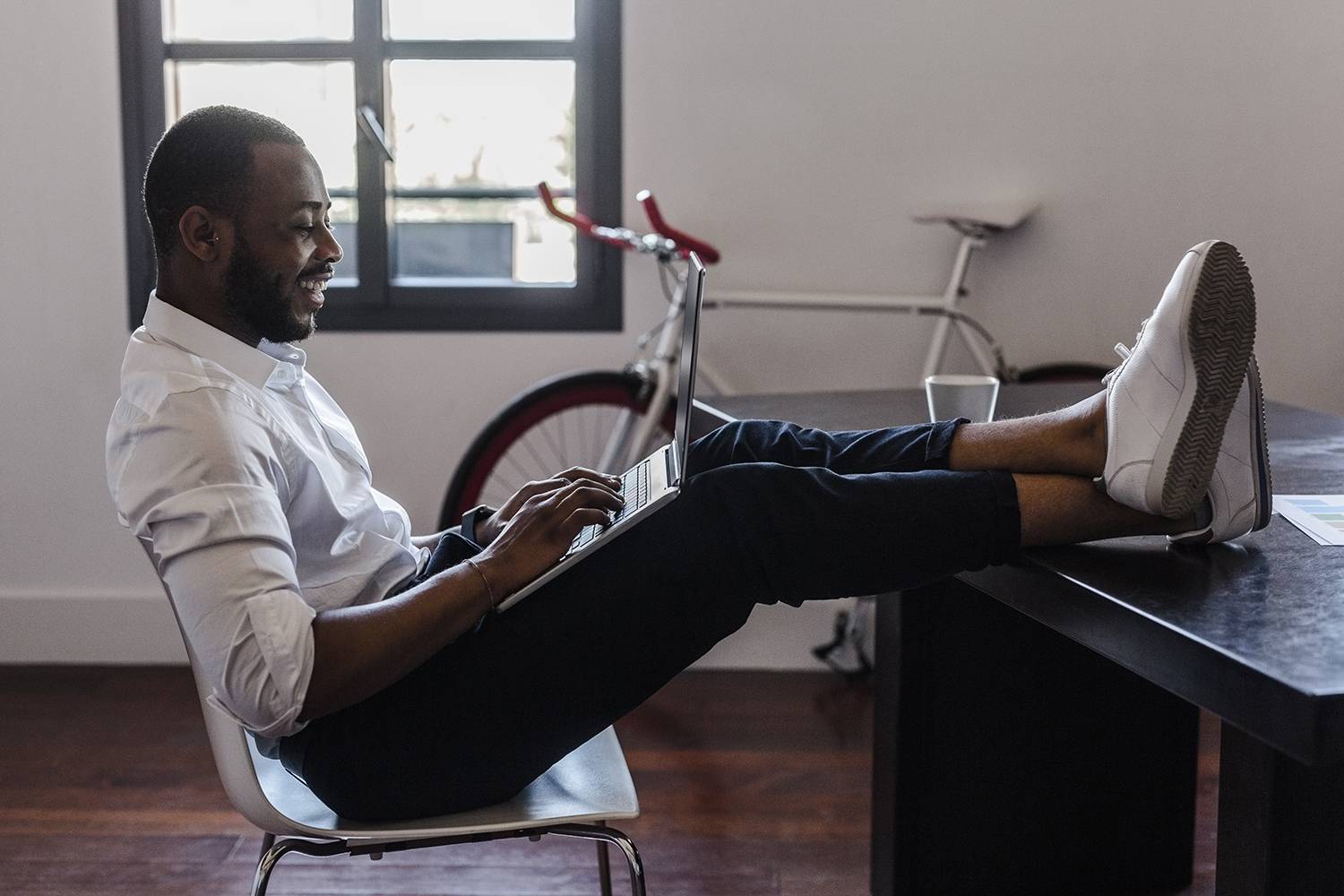Originally posted on Marketing Brew by Phoebe Bain, December 17, 2021.
When Lia Zneimer stepped down as WeWork’s head of social media in the spring of 2020, she initially planned to rest and recharge before heading back in-house somewhere. But as the pandemic rolled on, the social media and content strategy consultant realized applying for full-time positions was more difficult than originally expected.
“I was being pretty particular about what I wanted to do next, and in what kind of environment I wanted to do that work,” Zneimer told us. She went through rounds of interviews with several companies, but found herself pulling applications or not getting the role she was after.
Then, a former WeWork colleague offered her a freelance opportunity with his new company. She figured, why not?
“I’m a pretty driven, motivated person. And I like the creative freedom and flexibility that come with running my own work day to day. So that really appealed to me,” she explained. And, like Jim Carrey’s character in Yes Man, once she said yes to that opportunity, more kept coming. “It felt like the universe opened up and the stars aligned. And all of a sudden, people started reaching out with opportunities.”
And it turns out, she wasn’t alone in her decision. “Among my professional circles, I definitely saw a huge shift in folks who wanted to go freelance or wanted to start consulting or decided that being in-house full-time wasn’t for them,” Zneimer said. According to a study recently released by Upwork, 53% of freelancers provide “skilled” services, like marketing or computer programming, up from 45% in 2019.
Marketers—like many others across the workforce—seem to have left their jobs en masse in recent months. They’re contributing to what’s broadly been dubbed the “Great Resignation,” with some workers making the switch from internal gigs to independent freelance or consulting work. But while leaving a company to work for yourself has its perks (think: income potential and autonomy over one’s time), it’s not all sunshine, rainbows, and WFH.
Exit strategies
Marketing strategist and course creator Taylor Loren told us that, for her, the decision to strike out on her own stemmed from the pandemic. She quit not one, but two jobs during the pandemic—first her gig as head of content marketing at Later in August 2020, then as head of marketing at Girlboss in June 2021.
Losing a loved one (and the pandemic itself) made her realize she shouldn’t wait to achieve what she really wanted in life, she explained. Previously, leaving a job to go freelance had been a three-year goal she was putting off. “But it was also just wanting to have a different lifestyle,” Loren said. “I had a lot of friends that were course creators, and I really envied their lifestyle—and also the amount of money they were able to make.”
Some suspect back-to-office mandates are also spurring the shift to freelance. Flexible talent marketplace We Are Rosie’s head of talent and experience, Katie Elliott, told us the company saw an influx of brand marketers interested in freelance work during summer 2021.
“For us, the big trend of people coming in, raising their hand, and saying, ‘I’m going to leave my full-time job and go flex,’ was all about companies demanding them go back to the office,” Elliott said.
Money money money
Some marketers have found freelancing can be better for them in terms of both pay and hours. “I’m getting paid almost the exact same that I was in my last job, but with consulting, I’m working half the amount of time,” Loren told Marketing Brew.
But that’s not always the case. For instance, Zneimer finds she’s still navigating questions around how much to charge clients. “It’s hard. I’m learning so much as I go, and can see a path where independent work is more lucrative than an in-house position for some folks—but I’m definitely not there yet.”
Zneimer was initially nervous about striking out on her own financially. Although she’d been “financially more cautious since March of 2020,” she had also taken time off of work before making the decision to go freelance, so “it wasn’t like I was squirreling away money while I worked up the courage to quit my job.”
Before going solo, Loren, who described herself as the primary earner in her household, made sure she had at least four months of living expenses saved. “Saving up to quit my job also made me able to take time off for my mental health, and choose the clients and work that I felt really aligned with, instead of just taking on projects that would pay my rent that month,” Loren said.
Seeking freedom, finding burnout
The ability to work from anywhere, at any time, is perhaps one of the biggest perks of leaving a salaried gig. “I really love having autonomy over my schedule—and learning that I don’t do my best work in the afternoon,” marketing and growth consultant Grace Clarke, who quit her corporate gig at PR firm Derris in early 2020, told us.
While that freedom might be tempting, Zneimer thinks going freelance isn’t a “solution” to the burnout so many have faced over the past couple of years. When leaving WeWork, Zneimer assumed her burnout was coming from working internally. But when she still felt burnt out while working independently, she realized the issue was more about setting boundaries with her time.
“I know so many independent workers now who are like, ‘No, no, I’m completely swamped and completely underwater. My hours are off the charts, I’m working way more than I did in-house,’ which is kind of like the opposite of why so many people, myself included, wanted a freelance structure in the first place,” she shared.
